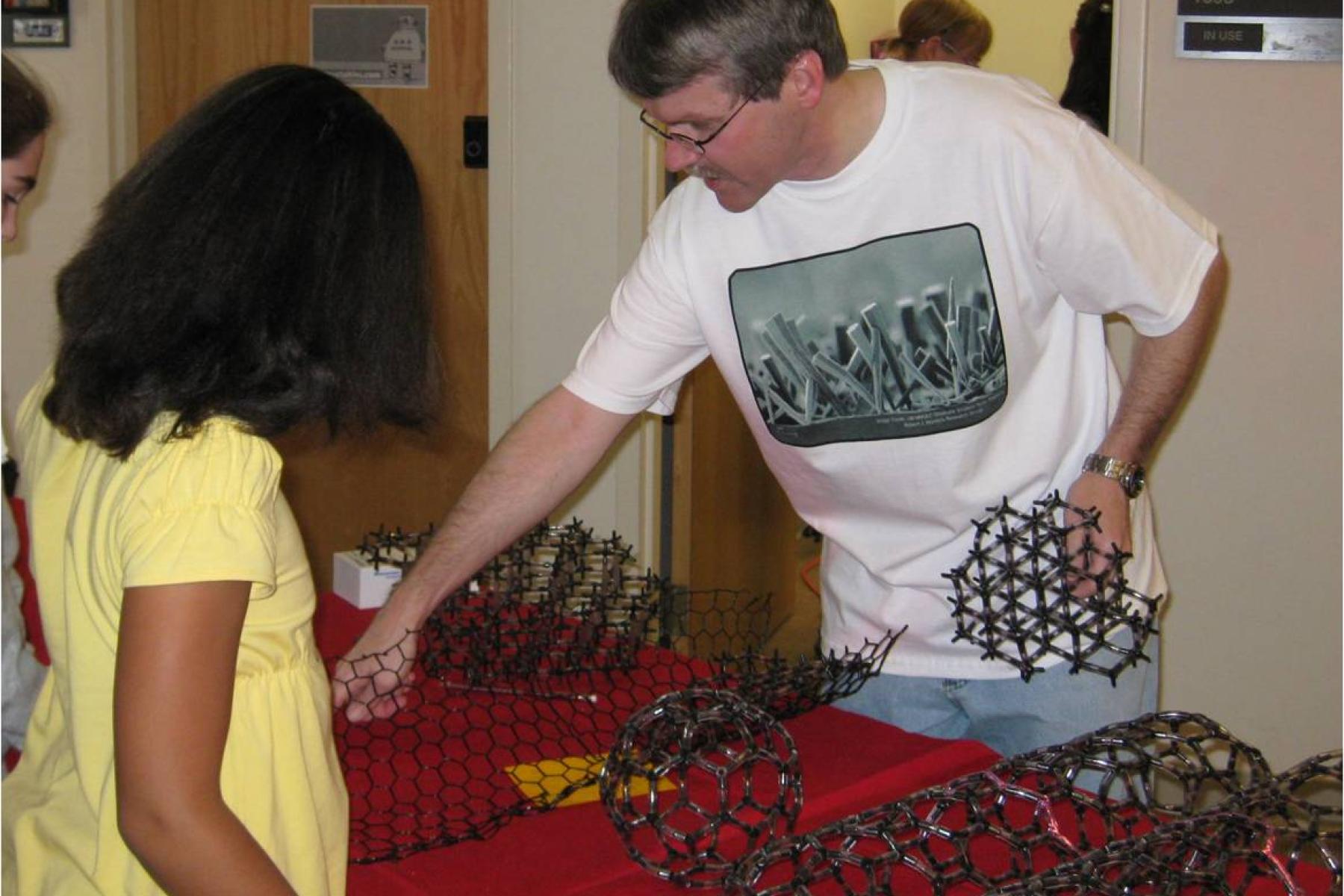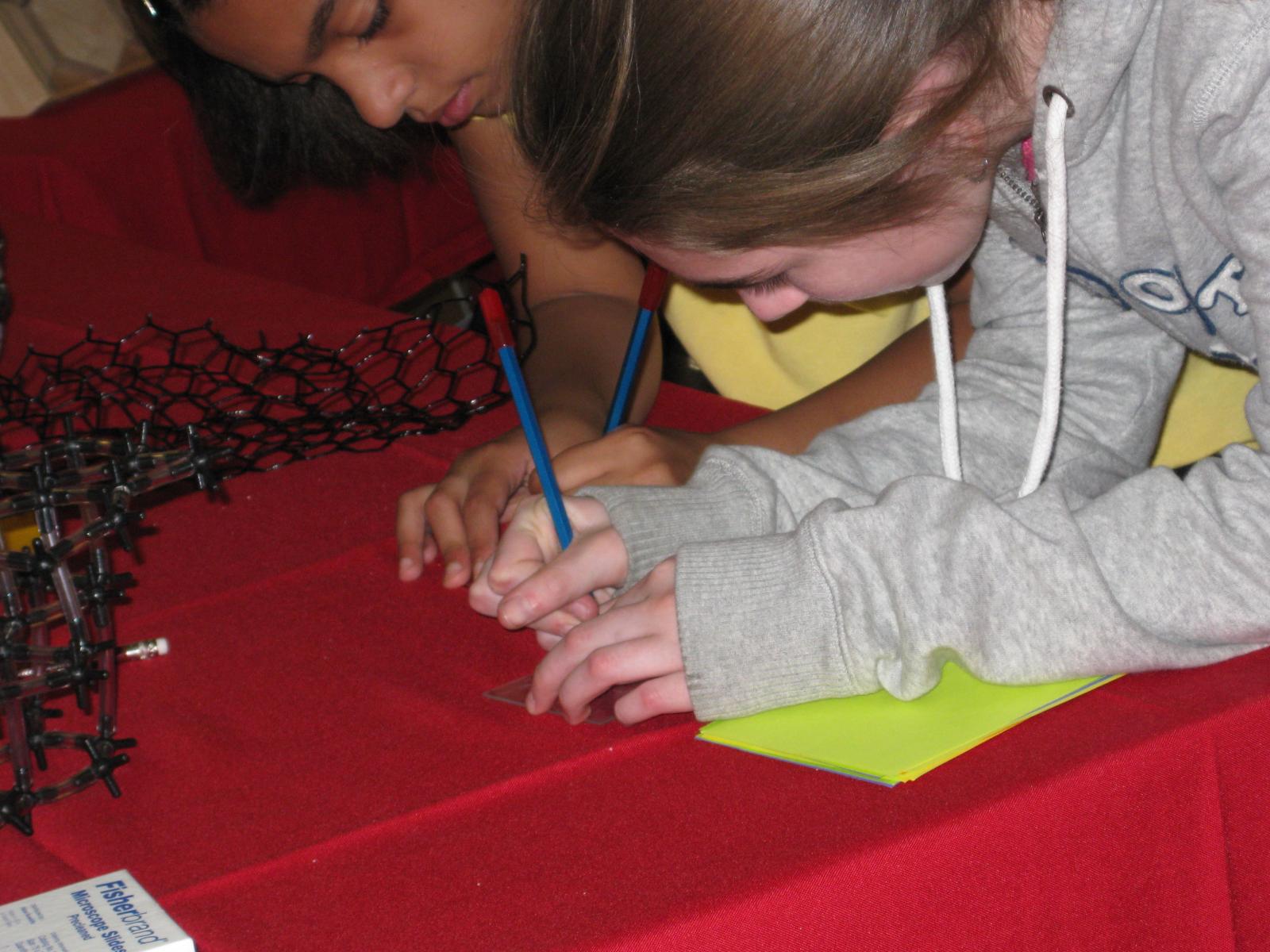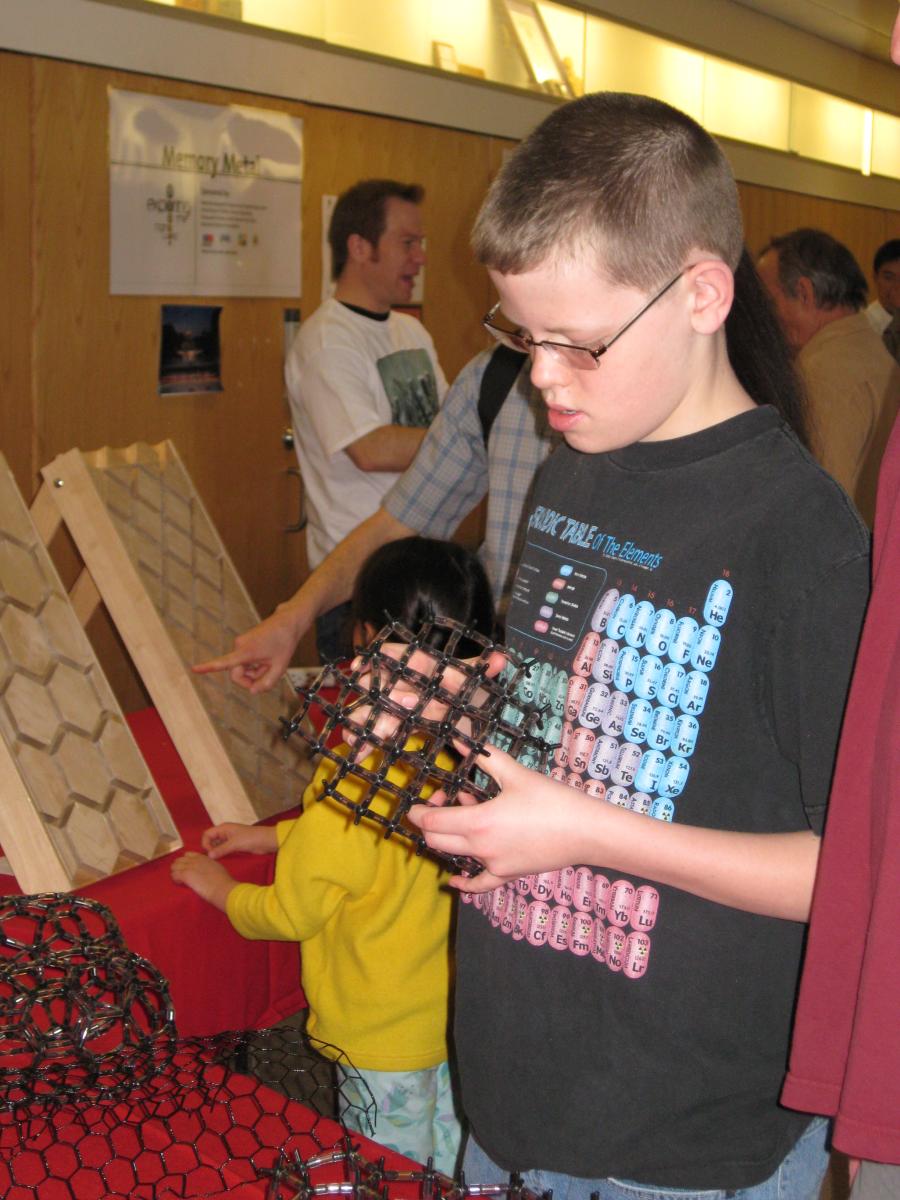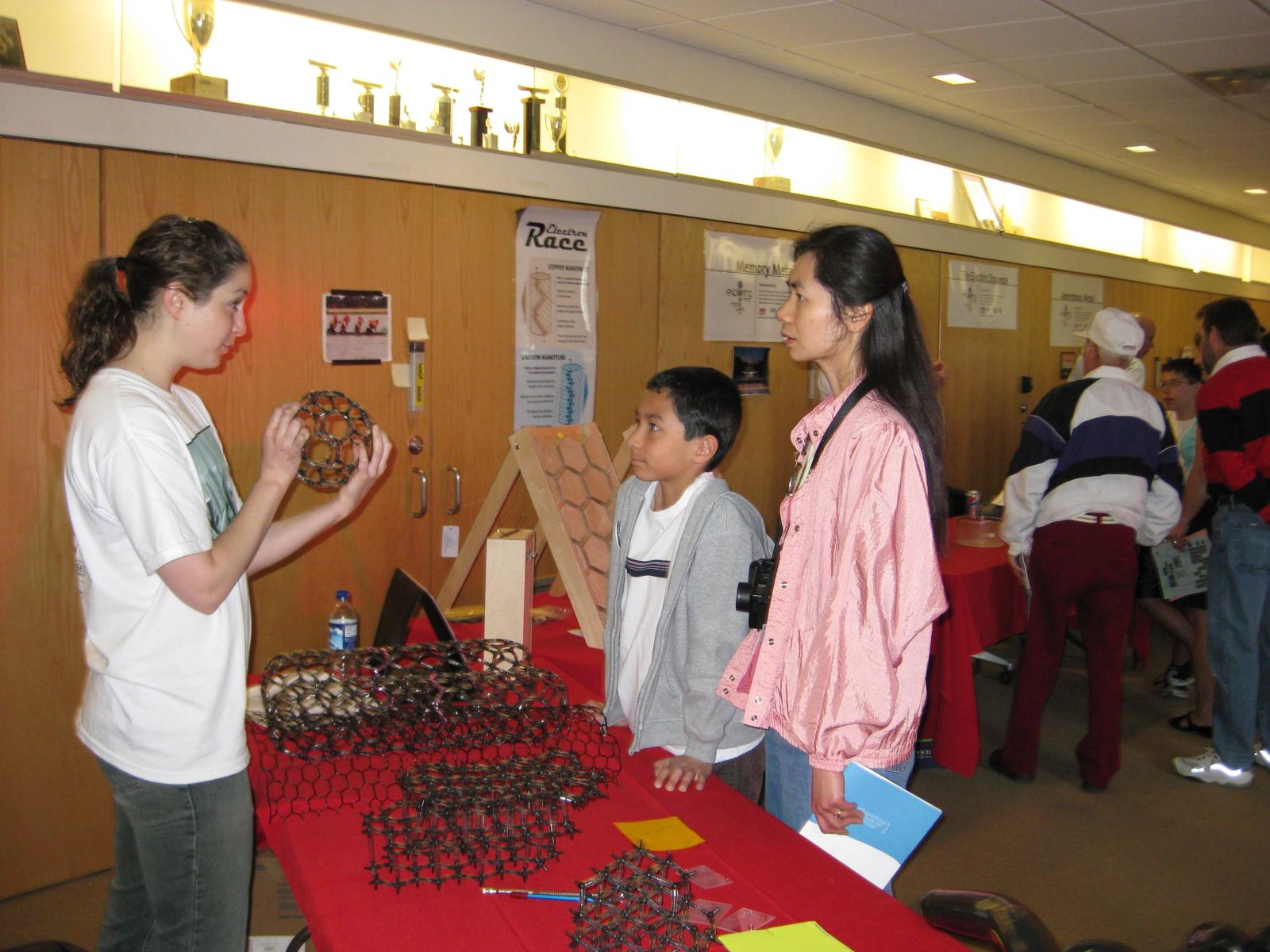DESCRIPTION
"Forms of Carbon" is a cart demo that demonstrates how the nanoscale arrangement of atoms dramatically impacts a material’s macroscale behavior. Visitors learn about the structure and properties of four different forms of carbon. During the program, visitors interact with models of four different forms of carbon. Visitors also observe the conductivity of graphite (using a simple circuit and an everyday pencil) and the hardness of diamond (using a diamond scribe to cut glass).
DESCRIPTION
"Forms of Carbon" is a cart demo that demonstrates how the nanoscale arrangement of atoms dramatically impacts a material’s macroscale behavior. Visitors learn about the structure and properties of four different forms of carbon. During the program, visitors interact with models of four different forms of carbon. Visitors also observe the conductivity of graphite (using a simple circuit and an everyday pencil) and the hardness of diamond (using a diamond scribe to cut glass).
TRAINING VIDEOS
OBJECTIVES
BIG IDEA
Carbon has many different forms. Nanoscale differences in the structures of the different forms give rise to their dramatically different properties.
LEARNING GOALS
Elemental carbon has many different structural forms, e.g. graphite, diamond, carbon nanotubes and buckyballs.
The forms of carbon differ in their nanoscale structure.
These nanoscale differences cause the different forms of carbon to have different properties at the macroscale.
NANO CONTENT MAP
Nanometer-sized things are very small, and often behave differently than larger things do.
Nanoscience, nanotechnology, and nanoengineering lead to new knowledge and innovations that weren't possible before.
Credits
University of Wisconsin-Madison Materials Research Science and Engineering Center (MRSEC)
Developed for the NISE Network with funding from the National Science Foundation under Award Numbers 0532536 and 0940143. Any opinions, findings, and conclusions or recommendations expressed in this product are those of the authors and do not necessarily reflect the views of the Foundation.
Creative Commons Attribution Non-Commercial Share Alike 3.0 United States (CC BY-NC-SA 3.0 US).
View more details

NISE Network products are developed through an iterative collaborative process that includes scientific review, peer review, and visitor evaluation in accordance with an inclusive audiences approach. Products are designed to be easily edited and adapted for different audiences under a Creative Commons Attribution Non-Commercial Share Alike license. To learn more, visit our Development Process page.




